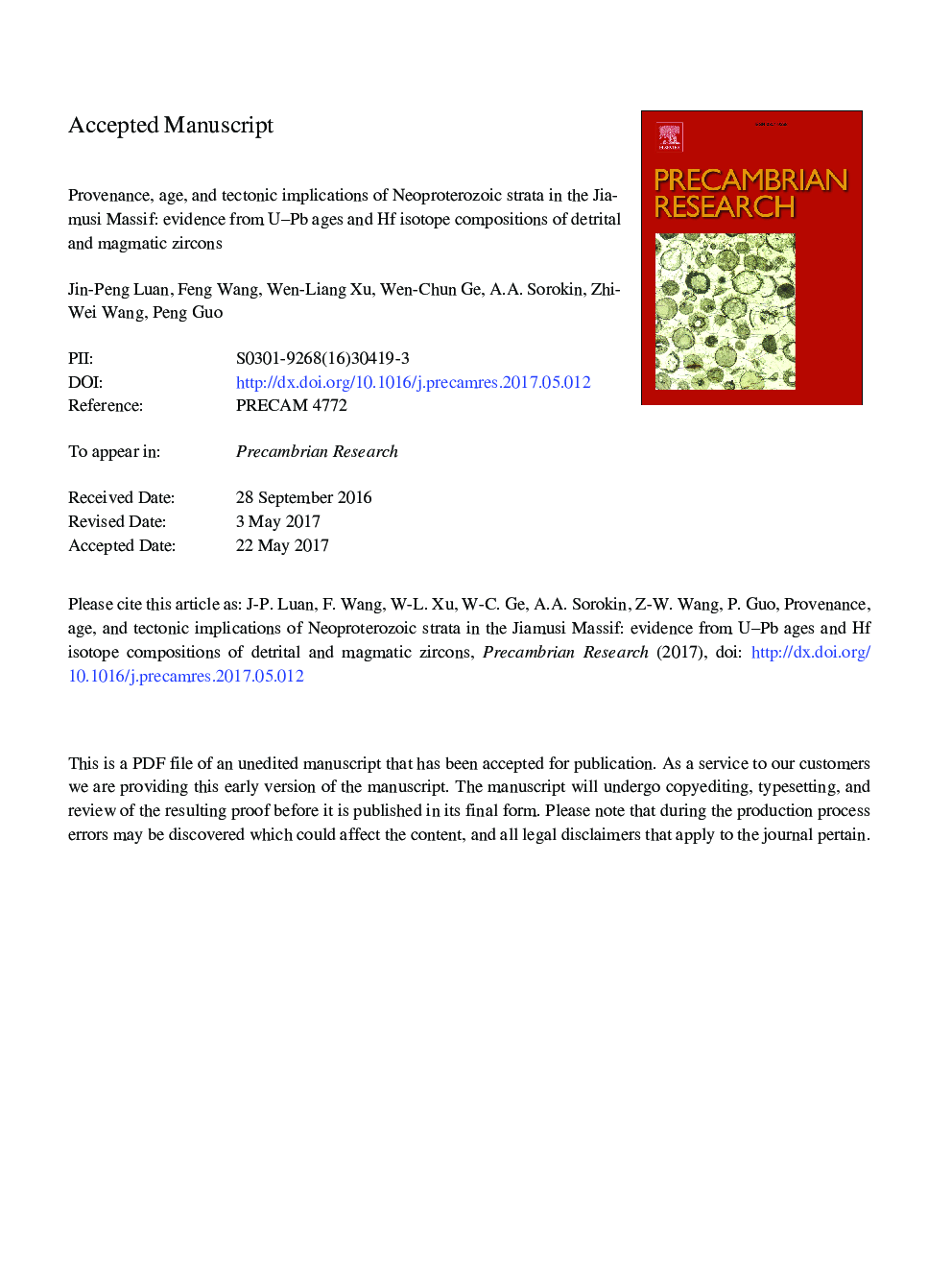| Article ID | Journal | Published Year | Pages | File Type |
|---|---|---|---|---|
| 5784744 | Precambrian Research | 2017 | 56 Pages |
Abstract
The Jiamusi Massif forms part of the eastern Central Asian Orogenic Belt (CAOB) and the Pacific oceanic tectonic domain, but its tectonic affinity is highly controversial. Here, we present U-Pb ages and Hf isotope compositions of detrital zircons from five metasedimentary rocks and one monzogranite within the Jiamusi Massif, and our aim was to constrain the depositional ages and provenance of the strata, as well as the tectonic affinity of the massif. Two specimens of two-mica schist from the Upper and Lower Kimkanskaya groups (Russian Far East) yielded zircon age populations at 572, 826, 891, 958, and 1776Â Ma, and 682, 752, 835, and 925Â Ma, respectively; a sericite schist and muscovite schist from the Majiajie Group (NE China) yielded zircon age populations at 951, 1232, 1419, 1643, and 2687Â Ma, and 1151, 1276, 1444, 1623, 1805, and 2652Â Ma, respectively; and a two-mica schist from the Ximashan Formation of the Mashan Group (NE China) yielded zircon age populations at 994, 1281, 1439, 1647, and 1805Â Ma. Taking into account the general geological relationships in the area, zircon age populations, and Hf isotopic compositions, combined with an age of 492Â Ma for a monzogranite that intrudes the Ximashan Formation, we conclude that the Lower Kimkanskaya Group formed in the Neoproterozoic and was sourced mainly from a Neoproterozoic terrane, whereas the Majiajie Group and Ximashan Formation formed in the Neoproterozoic but were sourced dominantly from a Mesoproterozoic terrane. Taking into account previous paleomagnetic data, our dating results and comparisons with zircon age populations in Precambrian rocks from northeastern Gondwana and the southern Siberia, North China, and Tarim cratons, suggest that the Jiamusi Massif has an affinity with the Tarim Craton.
Keywords
Related Topics
Physical Sciences and Engineering
Earth and Planetary Sciences
Geochemistry and Petrology
Authors
Jin-Peng Luan, Feng Wang, Wen-Liang Xu, Wen-Chun Ge, A.A. Sorokin, Zhi-Wei Wang, Peng Guo,
